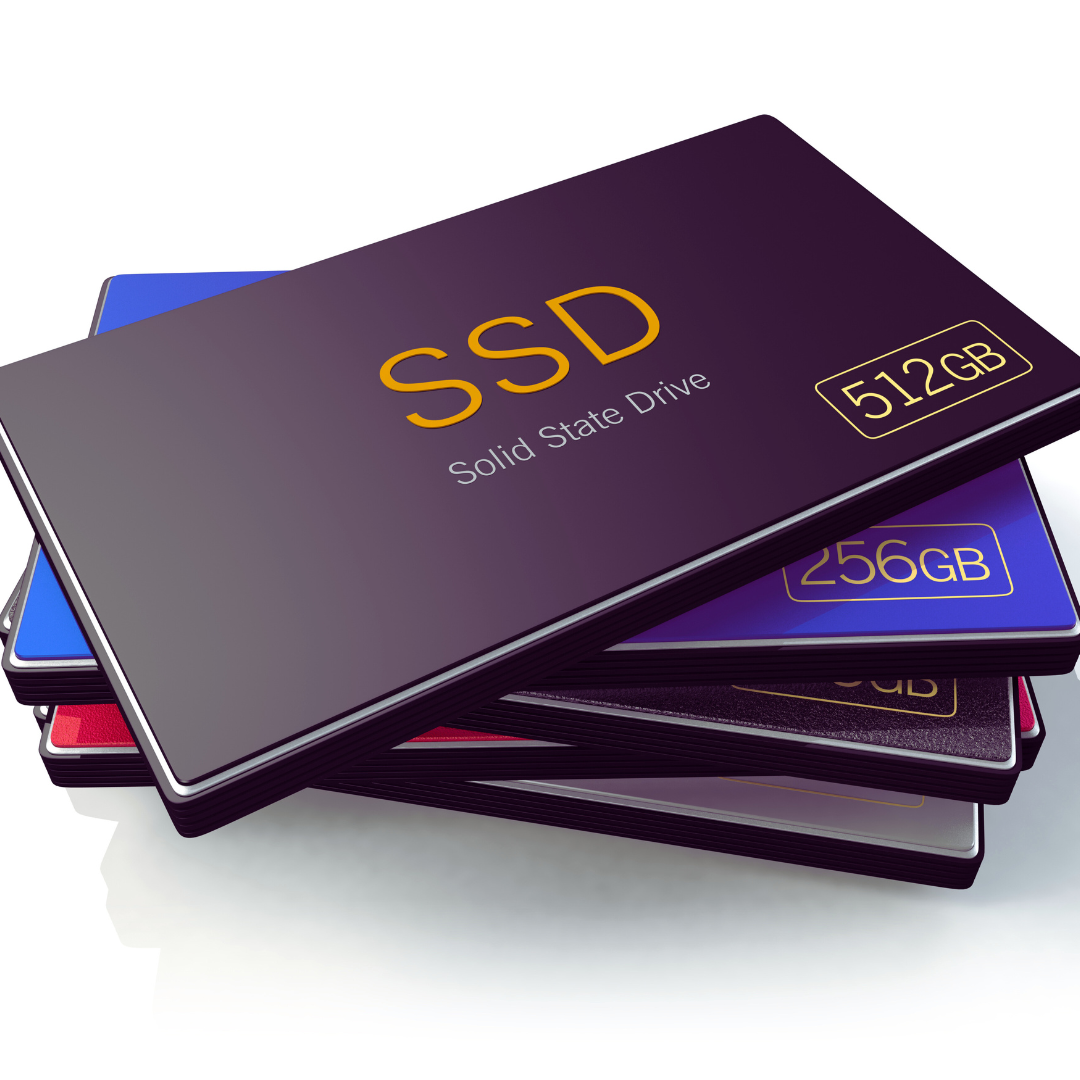When choosing between storage options, understanding the differences between SSDs and HDDs is crucial. SSDs, or Solid State Drives, are faster and more durable than traditional HDDs, or Hard Disk Drives, which rely on spinning disks and mechanical parts. This key distinction affects everything from the speed of data access to the physical resilience of the devices.
The performance of SSDs makes them an ideal choice for tasks requiring quick load times, such as gaming and video editing. Conversely, HDDs offer larger storage capacities at a lower cost, making them suitable for bulk data storage. Knowing these differences helps users select the appropriate storage solution for their needs.
Fundamental Differences Between SSDs and HDDs
SSDs and HDDs have distinct methods for data storage and retrieval that influence performance, durability, and usage scenarios. Understanding these differences is essential for making informed choices regarding data storage solutions.
How SSDs and HDDs Store Data
SSDs (Solid State Drives) utilise flash memory to store data through a system of integrated circuits. This approach allows for faster access times as there are no moving parts, making SSDs quicker in writing and retrieving information.
In contrast, HDDs (Hard Disk Drives) store data on spinning platters coated with magnetic material. Read/write heads move over these platters to access data. This mechanical process generally results in slower speeds compared to SSDs.
Mechanical Parts Versus Flash Memory
The fundamental architecture of SSDs avoids mechanical components. Instead, they rely on solid-state technology, resulting in reduced wear and tear. This absence of mechanical parts leads to greater reliability and longer lifespan under typical usage conditions.
HDDs, equipped with spinning platters and mechanical read/write heads, are more susceptible to physical damage. The moving parts can fail due to shocks or drops, making HDDs less reliable in mobile or high-impact environments.
Access and Data Transfer Methods
Data access for SSDs occurs via direct electrical pathways, which significantly reduces latency and enhances data transfer speeds. Typical speeds for SSDs can reach up to 5000 MB/s, depending on the specific model and connection interface.
On the other hand, HDDs transfer data at a slower rate due to their mechanical nature. The typical speed for consumer-grade HDDs ranges from 80 to 160 MB/s. The latency in accessing files can result in slower load times, particularly with larger datasets.
In summary, the differences in data storage mechanisms and components between SSDs and HDDs highlight their unique advantages and limitations.
Performance and Reliability Analysis
The performance and reliability of SSDs and HDDs differ significantly, impacting their suitability for various applications. Key factors include speed, latency, and access times, as well as boot and load times. Reliability and durability are essential considerations, encompassing performance under stress, while noise and energy consumption influence usability and efficiency.
Speed, Latency, and Access Times
SSDs operate using flash memory, which allows for much higher data transfer speeds compared to HDDs, which rely on spinning disks. Typical SSDs can achieve read/write speeds exceeding 500 MB/s, while standard HDD speeds range from 80-160 MB/s.
Latency is another crucial factor; SSDs have access times as low as 0.1 milliseconds, much faster than HDDs, which often take 5-10 milliseconds. This results in SSDs handling multiple Input/Output Operations Per Second (IOPS) more efficiently, crucial for tasks requiring quick data retrieval.
Boot Times and Load Times
Boot times and application load times significantly favour SSDs, which can reduce booting down to less than 10 seconds. In contrast, HDDs may take 30 seconds or more to boot up. This speed can enhance user experience, particularly in environments where efficiency is paramount.
Application load times also see dramatic differences, with SSDs frequently loading applications in a fraction of the time taken by HDDs. The swift access to data stored on SSDs results in a more responsive user interface, benefiting productivity.
Reliability and Durability
When considering reliability, SSDs provide advantages in durability due to their lack of moving parts. This reduces the risk of mechanical failure, making SSDs better suited for mobile devices and environments with physical shocks. Conversely, the mechanical components of HDDs make them more susceptible to failures, particularly if moved while in operation.
In terms of data retention, SSDs typically have a higher endurance rating, allowing them to withstand a greater number of write cycles. However, HDDs generally have longer lifespans when used in traditional read-heavy scenarios.
Noise and Energy Consumption
Noise levels differ notably between the two types of drives. SSDs operate silently as they have no moving parts, making them ideal for environments where noise is a concern. HDDs, on the other hand, produce audible sounds from spinning disks and moving read/write heads.
Energy consumption is also a significant distinguishing factor. SSDs generally exhibit lower power consumption, which contributes to greater energy efficiency, especially in laptops and mobile devices. In contrast, HDDs may consume more power during operation but can be advantageous in high-capacity scenarios due to their lower cost per gigabyte.
Storage Capacity and Technology Variations
Storage capacity and technology greatly influence the performance and usability of SSDs and HDDs. This section explores the differences in maximum storage capacities, form factors, interface types, and the innovative advancements shaping these technologies.
Comparing Maximum Storage Capacities
HDDs generally offer higher maximum storage capacities compared to SSDs. A typical HDD can reach up to 20 TB or more, making it suitable for large data storage needs, such as backups and mass media storage.
Conversely, SSDs have seen rapid advancements, with current models ranging from 128 GB to around 8 TB. However, enterprise-grade SSDs can fulfil larger capacity demands, often reaching 30 TB or higher. The choice between the two largely depends on the user’s specific storage requirements and budget.
Form Factors and Interface Types
Different form factors and interfaces exist for SSDs and HDDs, affecting their compatibility and performance. Traditional HDDs mainly come in 3.5-inch and 2.5-inch sizes. The 2.5-inch HDD is commonly used for laptops and smaller devices.
In comparison, SSDs are available in various form factors, including 2.5-inch SATA, M.2, and PCIe. The M.2 form factor is favoured for its compact design and efficient performance. SSDs can utilise different interfaces like SATA III and NVMe. The NVMe interface, particularly when paired with PCIe 3.0 or 4.0, significantly boosts read and write speeds, enhancing the overall user experience.
Innovation and Technological Advances
Recent technological advances have improved both performance and capacity in storage devices. SATA SSDs have increased speed while continuing to maintain compatibility with older systems.
However, the real breakthrough lies with NVMe SSDs, which leverage parallel data channels to maximise throughput. This results in much lower latency compared to traditional HDDs.
Innovation does not stop at speed; newer manufacturing techniques, like 3D NAND, have enabled higher storage densities within SSDs, significantly increasing their maximum capacities while lowering costs. These developments reflect the ongoing evolution in storage technology, catering to diverse user needs.
Use Cases and Cost Considerations
When selecting between SSDs and HDDs, budget and specific usage scenarios are key factors. Each has distinct benefits and limitations that affect performance, cost, and overall utility in various situations.
Budget and Cost per Gigabyte
HDDs typically offer a lower cost per gigabyte compared to SSDs. This makes them an attractive choice for users with limited budgets or those needing large storage capacities. For instance, HDDs can be found for as little as £20 for 1TB, while SSDs may cost around £100 for the same capacity.
Despite their higher price, SSDs deliver significantly faster data transfer speeds due to their NAND flash memory technology. This speed comes in handy for performance-intensive tasks but is accompanied by a cost that can be a barrier for some users.
Gaming and Video Editing
In gaming and video editing, performance is crucial. SSDs provide quicker load times and improved responsiveness, enhancing the gaming experience. For video editing, the speed of SSDs allows for faster rendering and smoother playback of high-resolution footage.
While gamers and video editors often prefer SSDs, HDDs can still work effectively for storing large media files due to their larger capacities and lower costs. Many professionals use a combination of both, utilising SSDs for software installation and HDDs for archiving completed projects.
Choosing the Right Storage Solution
Selecting between an SSD and an HDD depends on individual needs and use cases. For everyday tasks like document editing or web browsing, an HDD may suffice.
In contrast, for gaming, high-performance applications, and video editing, an SSD is the better option due to its speed. Users should consider their budget and the specific requirements of their tasks, weighing the advantages of each type before making a decision.




